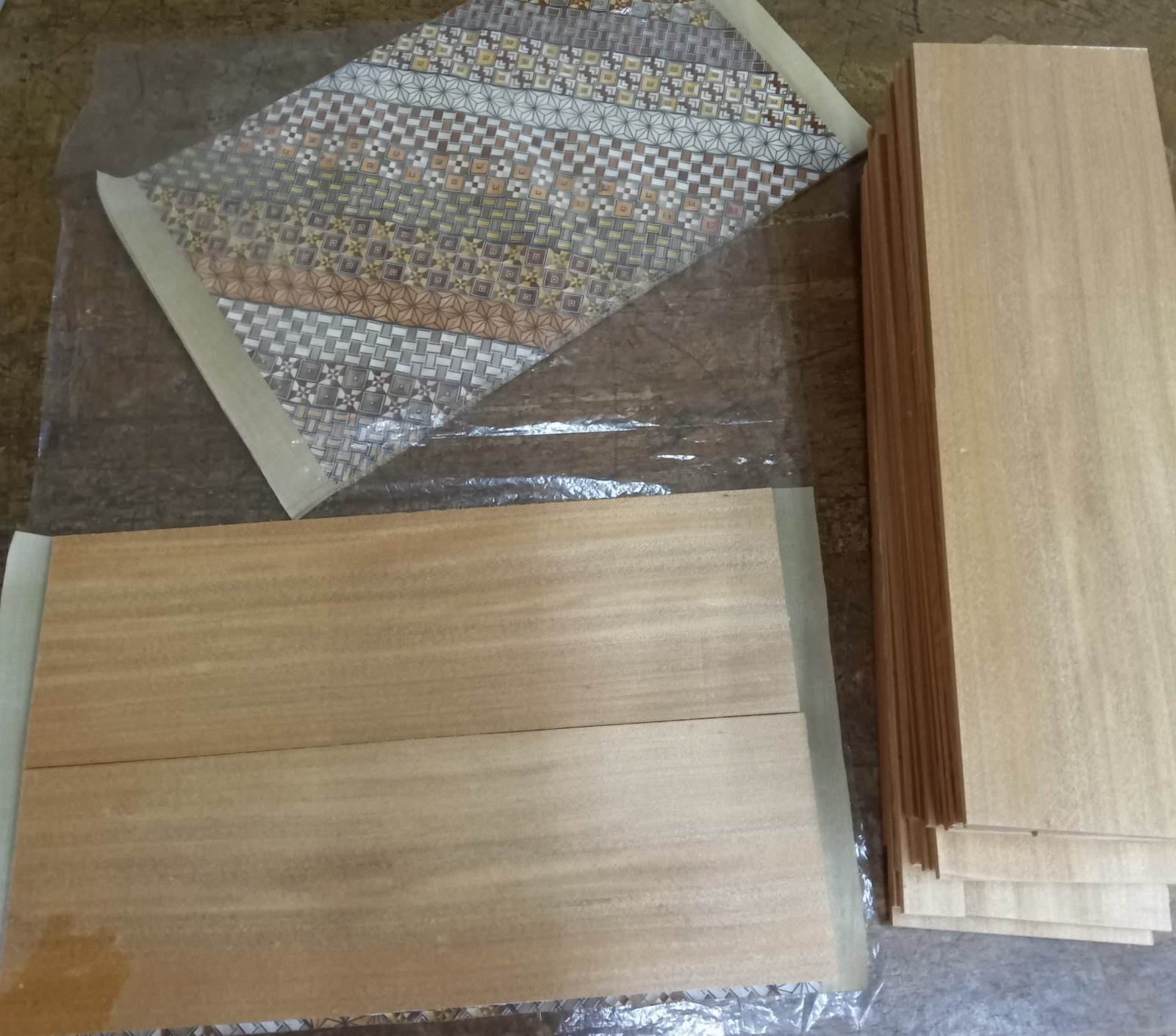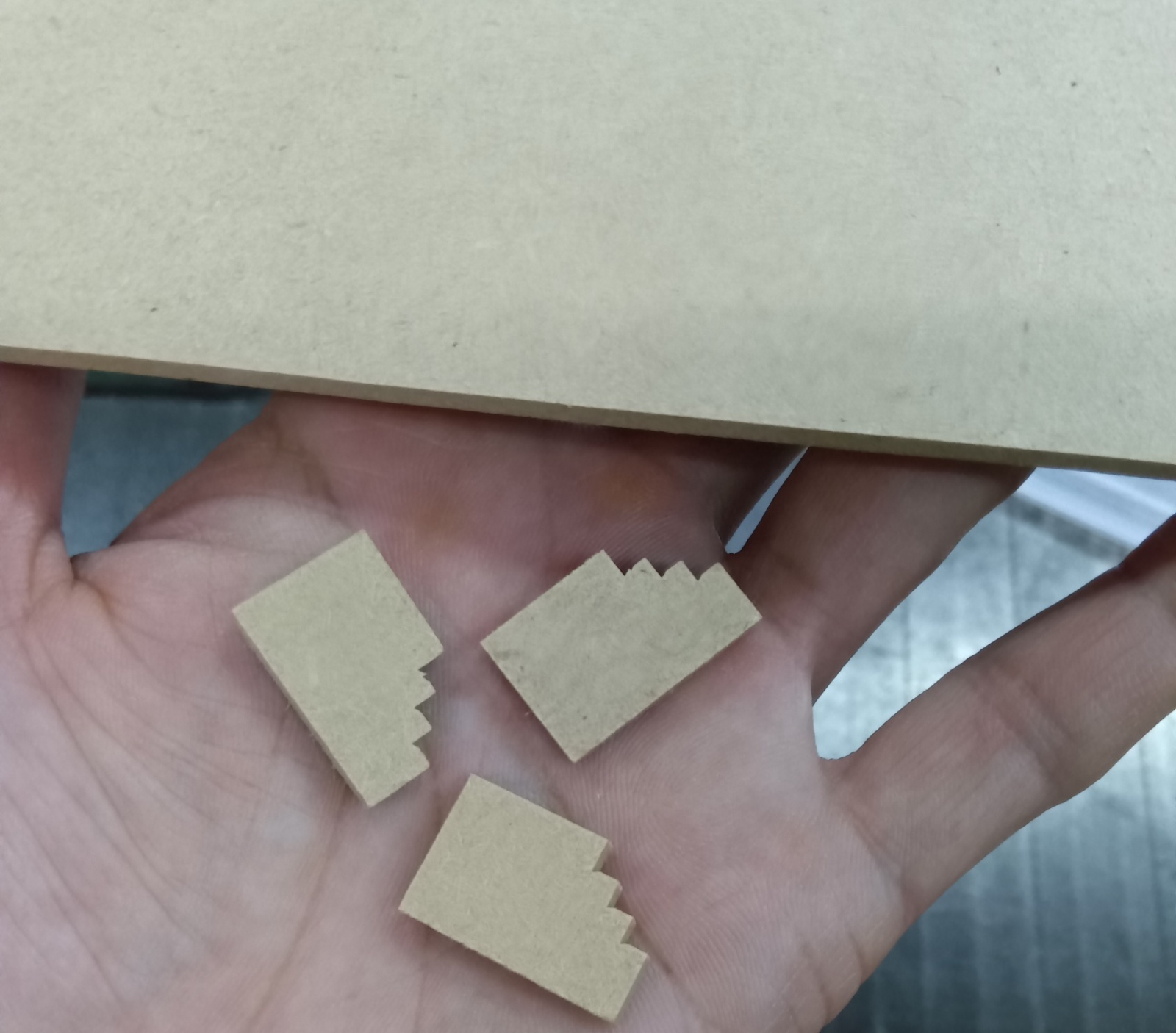Triangle 7 steps box
It's the start of November, and we're entering the time when more customers start shopping for the Christmas season. I'd like to increase production to keep up, but since puzzle boxes require numerous steps in the making, they can't be rushed. If I try to speed up the process, issues can arise later on, so I maintain my usual pace to ensure quality. However, the holiday season does bring a boost in demand, even for higher-priced boxes that don't usually sell as frequently. As a result, I'm focusing my work on these premium pieces, as requested by the shop owners.
Today, I applied Yosegi sheets to the top and bottom panels of the triangular Japanese puzzle box (photo). Unlike yesterday, I worked in two rows today. The width of this board roughly matches the height from the triangle's base to its apex. As I mentioned before, I'm making this box slightly larger than usual so that it visually aligns with the hexagonal puzzle boxes I create. In the past, I made the triangular puzzle boxes in a smaller size, viewing them as separate pieces due to their unique mechanisms compared to other multi-sided boxes. This board, as always, is made from Agathis wood and is about 6 mm thick.
The weather is expected to take a turn soon, with rain beginning tomorrow due to an approaching typhoon. As a result, the full-scale work on this triangular puzzle box will likely start next week.
Today, I’m wrapping up work a bit early to head to the lumber store before the rain starts. I only need a small quantity of plywood, so it makes sense to pick it up myself. When I need larger amounts, they deliver, but since I plan to look around at other materials as well, visiting in person is ideal for me. I need plywood to make internal components for puzzle boxes, like the ones shown in the photo. This part is for the 27-step mechanism, and because it requires fine cutting, regular wood can chip easily, so I use artificial wood instead. Though it's a bit softer and I have some concerns about its strength, I haven't had issues with it so far. It’s somewhat prone to cracking, so it comes with a surface coating for added durability.
Alright, I'm heading out now—see you next week!😄
Today, I applied Yosegi sheets to the top and bottom panels of the triangular Japanese puzzle box (photo). Unlike yesterday, I worked in two rows today. The width of this board roughly matches the height from the triangle's base to its apex. As I mentioned before, I'm making this box slightly larger than usual so that it visually aligns with the hexagonal puzzle boxes I create. In the past, I made the triangular puzzle boxes in a smaller size, viewing them as separate pieces due to their unique mechanisms compared to other multi-sided boxes. This board, as always, is made from Agathis wood and is about 6 mm thick.
The weather is expected to take a turn soon, with rain beginning tomorrow due to an approaching typhoon. As a result, the full-scale work on this triangular puzzle box will likely start next week.
Today, I’m wrapping up work a bit early to head to the lumber store before the rain starts. I only need a small quantity of plywood, so it makes sense to pick it up myself. When I need larger amounts, they deliver, but since I plan to look around at other materials as well, visiting in person is ideal for me. I need plywood to make internal components for puzzle boxes, like the ones shown in the photo. This part is for the 27-step mechanism, and because it requires fine cutting, regular wood can chip easily, so I use artificial wood instead. Though it's a bit softer and I have some concerns about its strength, I haven't had issues with it so far. It’s somewhat prone to cracking, so it comes with a surface coating for added durability.
Alright, I'm heading out now—see you next week!😄

